What is spondylolisthesis?
Spondylolisthesis is a spine condition where one of the bones in your back, known as a vertebra, slips out of its normal position and moves forward over the bone below it. This slippage can put pressure on nearby nerves, leading to discomfort, numbness or weakness, especially in your lower back and legs. It can also cause a sense of instability, or a “catch”, when standing up from a seated or lying position.
Spondylolisthesis can affect people of all ages, but it's most common in adults due to wear and tear on the spine over time. It can happen in younger athletes who participate in sports that put repeated stress on the lower back, such as gymnastics, football or weightlifting.
There are several types of spondylolisthesis, with the two most common being:
- Degenerative spondylolisthesis: This type occurs as part of the natural aging process. Over time, the discs and joints in your spine can wear down, making it easier for a vertebra to slip out of place.
- Isthmic spondylolisthesis: This type develops from a small stress fracture in a part of the vertebra called the pars interarticularis. This tiny crack can weaken the bone’s stability, putting more stress on the disc, which causes it to wear out, allowing the vertebrae to slip forward.
Other, less common forms of spondylolisthesis may be present at birth, result from traumatic injuries, or occur as complications from other spinal conditions.
Anatomy of the spine
Your spine is made up of small bones called vertebrae, which are stacked on top of each other like building blocks. These bones help support your body, protect your spinal cord, and allow you to move and bend.
Between each vertebra are spongy discs that act like shock absorbers, helping your spine move comfortably. Small joints, strong muscles and ligaments also work together to keep your spine stable and aligned.
Spondylolisthesis happens when one of these bones slips out of its normal place and moves forward over the bone below it. This can happen for a few reasons, like:
- A small crack or stress fracture in part of the vertebra (called the pars interarticularis)
- Natural wear and tear on the spine as we age
When a vertebra slips out of place, it can put pressure on nearby nerves, causing back pain, leg pain and other symptoms associated with spondylolisthesis. Often, these symptoms worsen with prolonged walking or standing and when transitioning to standing.
Spondylolisthesis symptoms
Many people with spondylolisthesis don’t experience any noticeable symptoms. However, when symptoms do occur, the most common one is lower back pain. This pain may:
- Feel like a pulled or strained muscle
- Spread to the buttocks or the back of the thighs
- Get worse with activity and improve with rest
Some people with spondylolisthesis may also have muscle spasms, which can cause:
- Stiffness in the lower back
- Tightness in the muscles at the back of the thighs (hamstrings)
- Difficulty standing or walking for long periods
In more serious cases, when the slipped bone presses on nearby nerves, you might feel tingling or numbness (sciatica) in one or both legs, or experience weakness in your legs.
When to see a doctor
Make an appointment with a spine specialist if you have pain in your lower back, thighs or buttocks, or tingling down your leg that doesn’t improve after three to four weeks. Seek medical help if you have weakness, trouble walking or standing up straight.
What causes spondylolisthesis?
Spondylolisthesis can happen in children, often due to a birth defect or a sudden injury. It most commonly affects the area where the lower back connects with the pelvis.
In adults, spondylolisthesis is usually caused by wear and tear on the spine over time. This can happen due to conditions like arthritis, injuries from accidents or issues like fractures, tumors or abnormal bone growth.
Sports that put a lot of stress on the bones, such as football or gymnastics, can also lead to problems with the spine. Over time, these activities may cause additional damage, weakening the bones and making it more likely for the vertebrae to slip out of place.
Spondylolisthesis risk factors
Several factors can increase your risk of developing spondylolisthesis, including:
- Age: The spine naturally weakens and degenerates with age, especially after 50.
- Sex: Women, particularly after menopause, are more prone to spondylolisthesis.
- Family history: A family history of spine issues or congenital spine abnormalities can increase your risk.
- Repetitive activity: Athletes in sports like gymnastics, football or weightlifting that involve repetitive strain on the back are at higher risk.
- Spinal abnormalities: Birth defects like spina bifida can make the spine more vulnerable.
- Traumatic injury: Accidents or falls that cause stress fractures in the spine can lead to spondylolisthesis.
- Excessive weight or poor posture: Extra weight or poor posture puts added stress on the spine, increasing the risk of injury.
- Other conditions: Conditions like rheumatoid arthritis weaken joints, making the spine more prone to slippage.
Being aware of these risk factors can help you take steps to prevent or manage spondylolisthesis, especially if you have multiple risk factors. Regular exercise, maintaining a healthy weight and practicing good posture are all important ways to protect your spine.
Diagnosing spondylolisthesis
Your provider can diagnose spondylolisthesis with a physical exam and imaging tests. Spondylolisthesis symptoms can mirror those of other back and spine conditions, so your provider will want to make sure the diagnosis is accurate before recommending treatment.
-
Medical history and exam
To diagnose spondylolisthesis, your doctor will start by asking about your medical history, overall health and any symptoms you're experiencing. They'll want to know if you're active in sports or have a job that puts stress on your lower back.
Next, your doctor will perform a thorough exam of your back and spine, checking for things like:
- Strength and sensation in your legs
- Trouble moving or bending
- Muscle spasms or weakness
They’ll also observe your posture and how you walk. For example, tight hamstrings might make you stand or walk in a stiff or awkward way, which can be a sign of spondylolisthesis.
-
Imaging and tests
To confirm a diagnosis of spondylolisthesis, your doctor may recommend imaging tests, which help provide a clear picture of what’s happening in your spine.
- X-ray: An X-ray can show if a vertebra has slipped out of place and highlight any fractures in the surrounding bones. Your doctor may ask you to stand or sit in different positions during the X-ray to get a better view of the severity of the problem. In many cases, an X-ray is all that’s needed to diagnose spondylolisthesis.
- Computerized tomography (CT): If an X-ray shows that a vertebra has slipped but more detail is needed, a CT scan may be used. This test combines X-rays and computer technology to create detailed, 3D images of the spine. It can help doctors spot fractures in the pars interarticularis (a part of the vertebra) that may be contributing to the condition.
- Magnetic resonance imaging (MRI) scan: An MRI scan creates detailed images of both your spine and the soft tissues around it, like nerves and discs. If you’re experiencing symptoms that suggest a nerve might be compressed, an MRI can help doctors see if a slipped vertebra is putting pressure on a nerve or if there’s swelling in the spinal bones that might indicate a fracture.
Spondylolisthesis treatment
Treatment options vary based on the severity of spondylolisthesis. Many people can still live active lives with this condition. For most people, performing exercises that strengthen the lower back muscles and avoiding activities that could overextend the back help to improve symptoms.
In more severe cases, surgery might be necessary to stabilize the spine and relieve pressure on nerve roots. Usually, surgery becomes an option after other treatment methods no longer help with your symptoms.
Lifestyle changes and exercise
To manage spondylolisthesis, making a few lifestyle changes and modifying physical activities can help reduce pain and prevent further strain on your spine. Applying heat or ice to the affected area can provide immediate relief—ice helps reduce swelling and numb pain, while heat can relax muscles and improve blood flow.
It’s important to avoid activities that can worsen symptoms, such as bending, lifting or sports like gymnastics and athletics that stress the lower back. Taking a break from these activities allows your spine time to heal. Instead, try low-impact exercises like walking or swimming to keep moving without putting extra strain on your back.
By making these adjustments, many people find relief from pain and can continue living an active lifestyle.
Physical therapy
Physical therapy is a helpful treatment for managing spondylolisthesis. It focuses on strengthening the muscles around your spine, including your back and core muscles, to relieve pressure and reduce pain. Stronger muscles help improve your posture, stability and movement, making daily activities easier and less painful.
Your physical therapist will guide you through exercises to strengthen your spine-supporting muscles and may also teach you better posture and movement techniques. With the right approach, physical therapy can improve your mobility, reduce discomfort and support long-term spinal health.
Bracing
If you have a vertebra fracture causing spondylolisthesis, your doctor may recommend wearing a back brace to help stabilize your spine and promote healing. The back brace supports the affected area, reduces movement and helps prevent further injury while your spine recovers.
Your healthcare provider will provide specific instructions on how long you should wear the brace, which can vary depending on the severity of the fracture and your overall condition. Typically, you may need to wear the brace for several weeks to ensure proper healing and to reduce pain during daily activities.
Medication
To help manage pain and inflammation from spondylolisthesis, your doctor may recommend:
- Nonsteroidal anti-inflammatory drugs (NSAIDs): Medicines such as ibuprofen, aspirin and naproxen sodium can reduce pain and inflammation. Use as directed, and don’t take for more than 10 days without consulting your doctor. Always check with your provider before using them, especially if you have other health conditions.
- Steroid injections: If pain is more severe or localized, your provider may recommend a corticosteroid injection directly into the affected area of your spine. This can provide targeted pain relief by reducing inflammation at the source.
Surgery
Surgery is typically considered for spondylolisthesis when other treatments like physical therapy, pain medications and injections haven't worked. It may also be recommended if you're experiencing severe pain, numbness or weakness in your legs or feet, or if the vertebrae continue slipping. Additionally, if you have spinal stenosis (narrowing of the spinal canal), surgery might be needed to relieve pressure on the nerves.
Spondylolisthesis surgery may also include spinal fusion, which involves connecting the two affected vertebrae with metal screws and a bone graft to help stabilize the spine and prevent further slippage.
Find specialized spondylolisthesis care near you
If you're experiencing back pain, numbness or other symptoms of spondylolisthesis, take the next step toward relief with expert care at Baylor Scott & White. With convenient locations across North and Central Texas, our orthopedic and neuro spine specialists are ready to diagnose your condition and create a personalized treatment plan. Get the care you need to feel better and get back to what you love.

AccentCare - Fort Worth
3880 Hulen St , Fort Worth, TX, 76107

AccentCare Home Health of Brenham
526 W Main St , Brenham, TX, 77833

AccentCare Home Health of College Station
119 Medical Park Lane Ste C, Huntsville, TX, 77340

AccentCare Home Health of College Station
1605 Rock Prairie Rd Ste 206, College Station, TX, 77845

AccentCare Home Health Of Denton
225 W. Mulberry St. Ste A, Denton, TX, 76201

AccentCare Home Health Of Desoto
911 York Drive Ste 203, DeSoto, TX, 75115

AccentCare Home Health Of Fort Worth (Arlington)
700 Highlander Blvd Ste 205, Arlington, TX, 76015

AccentCare Home Health of Huntsville
122 Medical Park Lane B , Huntsville, TX, 77340

AccentCare Home Health of Marble Falls
1100 Mission Hills Dr Ste 100, Marble Falls, TX, 78654

AccentCare Home Health Of McKinney
6800 Weiskopf Ave Ste 100, McKinney, TX, 75070

AccentCare Home Health Of Taylor (Hutto)
567 Chris Kelley Blvd Ste 201, Hutto, TX, 78634

AccentCare Home Health Of Temple
3809 S General Bruce Dr Ste 105B, Temple, TX, 76502

AccentCare Home Health Of Waco
8300 Central Park Dr Ste A, Waco, TX, 76712

AdventHealth Central Texas
2201 S Clear Creek Rd , Killeen, TX, 76549

Andrews Women's Hospital at Baylor Scott & White - Fort Worth
1400 8th Ave , Fort Worth, TX, 76104

Baylor Scott & White - Hillcrest Infectious Disease Clinic
50 Hillcrest Medical Blvd MOB1, Ste 104, Waco, TX, 76712
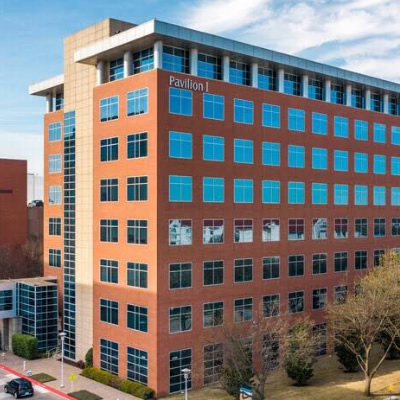
Baylor Scott & White - Plano Brain and Spine Center
4708 Alliance Blvd Pavilion I, Ste 810, Plano, TX, 75093

Baylor Scott & White - Texas Brain and Spine Institute
900 Scott and White Dr , College Station, TX, 77845
- Monday: 8:00 am - 5:00 pm
- Tuesday: 8:00 am - 5:00 pm
- Wednesday: 8:00 am - 5:00 pm
- Thursday: 8:00 am - 5:00 pm
- Friday: 8:00 am - 5:00 pm

Baylor Scott & White - Texas Brain and Spine Institute - Huntsville
122 Medical Park Ln Ste A, Huntsville, TX, 77340

Baylor Scott & White - The Brenham Clinic
600 N Park St , Brenham, TX, 77833
- Monday: 7:30 am - 5:00 pm
- Tuesday: 7:30 am - 5:00 pm
- Wednesday: 7:30 am - 5:00 pm
- Thursday: 7:30 am - 5:00 pm
- Friday: 7:30 am - 5:00 pm

Baylor Scott & White 65+ Clinic
4716 Alliance Blvd Ste 500, Plano, TX, 75093
- Monday: 8:00 am - 4:30 pm
- Tuesday: 8:00 am - 4:30 pm
- Wednesday: 8:00 am - 4:30 pm
- Thursday: 8:00 am - 4:30 pm
- Friday: 8:00 am - 4:30 pm

Baylor Scott & White Advanced Cardiac Imaging Specialists
1100 Allied Dr , Plano, TX, 75093

Baylor Scott & White Advanced Cardiovascular and Imaging Consultants
4708 Alliance Blvd Ste 450, Plano, TX, 75093
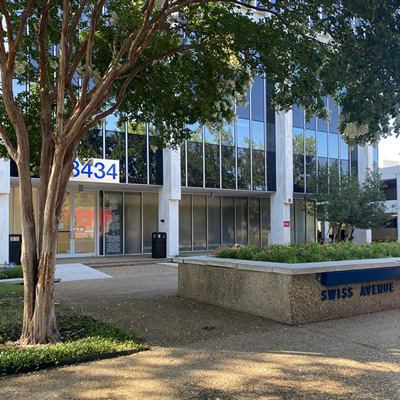
Baylor Scott & White Advanced Digestive Care
3434 Swiss Ave Ste 200, Dallas, TX, 75204
- Monday: 8:00 am - 5:00 pm
- Tuesday: 8:00 am - 5:00 pm
- Wednesday: 8:00 am - 5:00 pm
- Thursday: 8:00 am - 5:00 pm
- Friday: 8:00 am - 5:00 pm

Baylor Scott & White Advanced Heart and Lung Disease Center - Fort Worth
1420 8th Ave Ste 103, Fort Worth, TX, 76104

Baylor Scott & White Advanced Heart Care - Anna
450 N Standridge Blvd , Anna, TX, 75409

Baylor Scott & White Advanced Heart Care - Decatur
2401 S FM 51 Ste 200, Decatur, TX, 76234

Baylor Scott & White Advanced Heart Care - Denton
3333 Colorado Blvd , Denton, TX, 76210

Baylor Scott & White Advanced Heart Care - Idabel, OK
4 SE Avenue A , Idabel, OK, 74745

Baylor Scott & White Advanced Heart Care - Keller (Satellite)
3124 N Tarrant Pkwy Ste 204, Keller, TX, 76177

Baylor Scott & White Advanced Heart Care - McKinney (Satellite)
5236 W University Dr Ste 4450, McKinney, TX, 75071

Baylor Scott & White Advanced Heart Care - Mt Pleasant (Satellite)
1011 N Jefferson Ave , Mt Pleasant, TX, 75455

Baylor Scott & White Advanced Heart Care - Paris
875 S Collegiate Dr , Paris, TX, 75462

Baylor Scott & White Advanced Heart Care - Plano
4716 Dexter Dr Ste 100, Plano, TX, 75093

Baylor Scott & White Advanced Heart Care - Sherman Sycamore (Satellite)
203 E Sycamore St , Sherman, TX, 75090

Baylor Scott & White Advanced Heart Care - Sulphur Springs
601 Airport Rd Ste 110, Sulphur Springs, TX, 75482

Baylor Scott & White Advanced Heart Care – Sherman Highland (Satellite)
300 N Highland Ave , Sherman, TX, 75092

Baylor Scott & White Advanced Heart Failure Clinic - Irving
2001 N MacArthur Blvd Bldg 1, Ste 360, Irving, TX, 75061
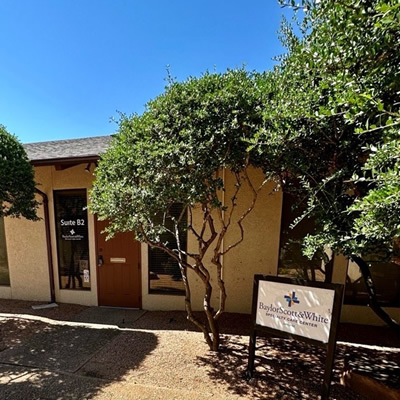
Baylor Scott & White Advanced Heart Failure Clinic - Abilene
1219 E South 11th St Ste B2, Abilene, TX, 79602

Baylor Scott & White Advanced Heart Failure Clinic - Amarillo
1901 Medi Park Dr Ste 2051, Amarillo, TX, 79106

Baylor Scott & White Advanced Heart Failure Clinic - Dallas
3410 Worth St Ste 250, Dallas, TX, 75246
- Monday: 8:00 am - 4:30 pm
- Tuesday: 8:00 am - 4:30 pm
- Wednesday: 8:00 am - 4:30 pm
- Thursday: 8:00 am - 4:30 pm
- Friday: 8:00 am - 4:30 pm
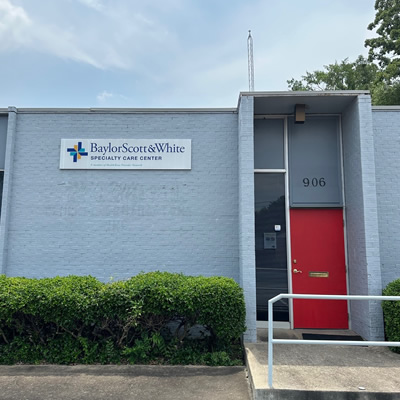
Baylor Scott & White Advanced Heart Failure Clinic - Longview
906 Judson Rd , Longview, TX, 75601
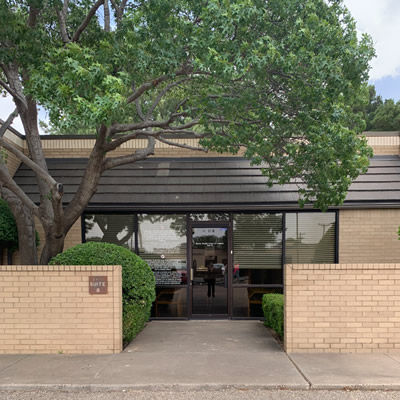
Baylor Scott & White Advanced Heart Failure Clinic - Lubbock
3711 22nd St Ste B, Lubbock, TX, 79410
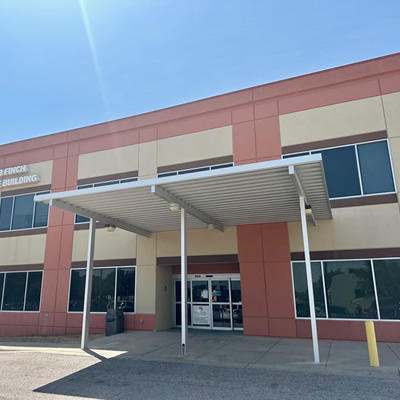
Baylor Scott & White Advanced Heart Failure Clinic - Midland/Odessa
420 E 6th St Ste 102, Odessa, TX, 79761
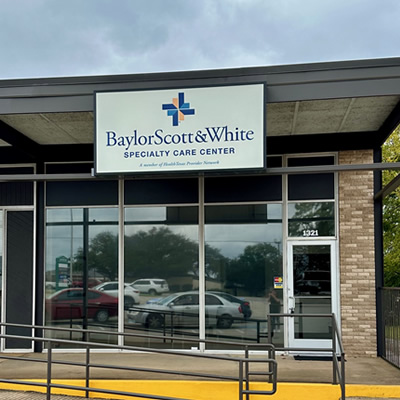
Baylor Scott & White Advanced Heart Failure Clinic - Tyler
1321 S Beckham Ave , Tyler, TX, 75701

Baylor Scott & White Advanced Heart Failure Clinic - Waxahachie
2360 N Interstate 35E MOB 2, Ste 310, Waxahachie, TX, 75165

Baylor Scott & White Advanced Heart Failure Specialists - Fort Worth
1250 8th Ave Ste 200, Fort Worth, TX, 76104
- Monday: 8:00 am - 5:00 pm
- Tuesday: 8:00 am - 5:00 pm
- Wednesday: 8:00 am - 5:00 pm
- Thursday: 8:00 am - 5:00 pm
- Friday: 8:00 am - 5:00 pm

Baylor Scott & White Advanced Lung Disease Specialists - Dallas
3410 Worth St Ste 250, Dallas, TX, 75246
- Monday: 8:30 am - 5:00 pm
- Tuesday: 8:30 am - 5:00 pm
- Wednesday: 8:30 am - 5:00 pm
- Thursday: 8:30 am - 5:00 pm
- Friday: 8:30 am - 4:30 pm

Baylor Scott & White All Saints Medical Center - Fort Worth
1400 8th Ave , Fort Worth, TX, 76104
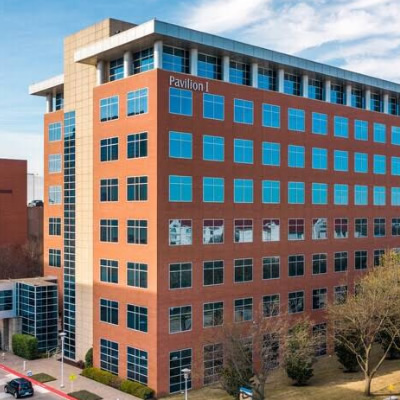
Baylor Scott & White Ambulatory Endoscopy Center
4708 Alliance Blvd Pavilion I, Ste 210, Plano, TX, 75093
- Monday: 7:00 am - 3:00 pm
- Tuesday: 7:00 am - 3:00 pm
- Wednesday: 7:00 am - 3:00 pm
- Thursday: 7:00 am - 3:00 pm
- Friday: 7:00 am - 3:00 pm
Frequently asked questions
-
What makes spondylolisthesis worse?
Spondylolisthesis can get worse over time from activities that put pressure on the lower back, such as contact sports and gymnastics. You may also need to avoid activities that require frequent bending and lifting.
-
Can spondylolisthesis be reversed?
Doctors may not be able to reverse spondylolisthesis. However, treatment can reduce symptoms, and surgery can realign your spine, relieve pressure and improve your spine’s stability.
-
Can spondylolisthesis cause hip pain?
Yes, spondylolisthesis can cause hip pain. When a bone in the spine slips out of place, it can press on nerves, causing pain that may spread to the hips. If you have ongoing hip or back pain, talk to your healthcare provider.
-
Is spondylolisthesis hereditary?
Yes, spondylolisthesis can be hereditary. If a close relative has it, you might be at higher risk. Other factors, like spine injuries, birth defects or repetitive strain from activities like sports, can also contribute. However, not everyone with a family history will develop it.
-
How common is spondylolisthesis?
Spondylolisthesis is a fairly common condition, affecting at least 4-6% of people. In many cases, it doesn't cause symptoms and doesn’t require any treatment.
-
Is walking good for spondylolisthesis?
Yes, walking is a good exercise for spondylolisthesis, as it strengthens muscles and keeps joints mobile without straining your back. Start slowly, focus on good posture and check with your doctor before starting any new exercise.
-
Can spondylolisthesis cause sciatica?
Yes, spondylolisthesis can cause sciatica when a spine bone slips out of place and puts pressure on the sciatic nerve, leading to pain, numbness or tingling in your back, legs or buttocks. If you experience these symptoms, talk to your healthcare provider for proper diagnosis and treatment options.

